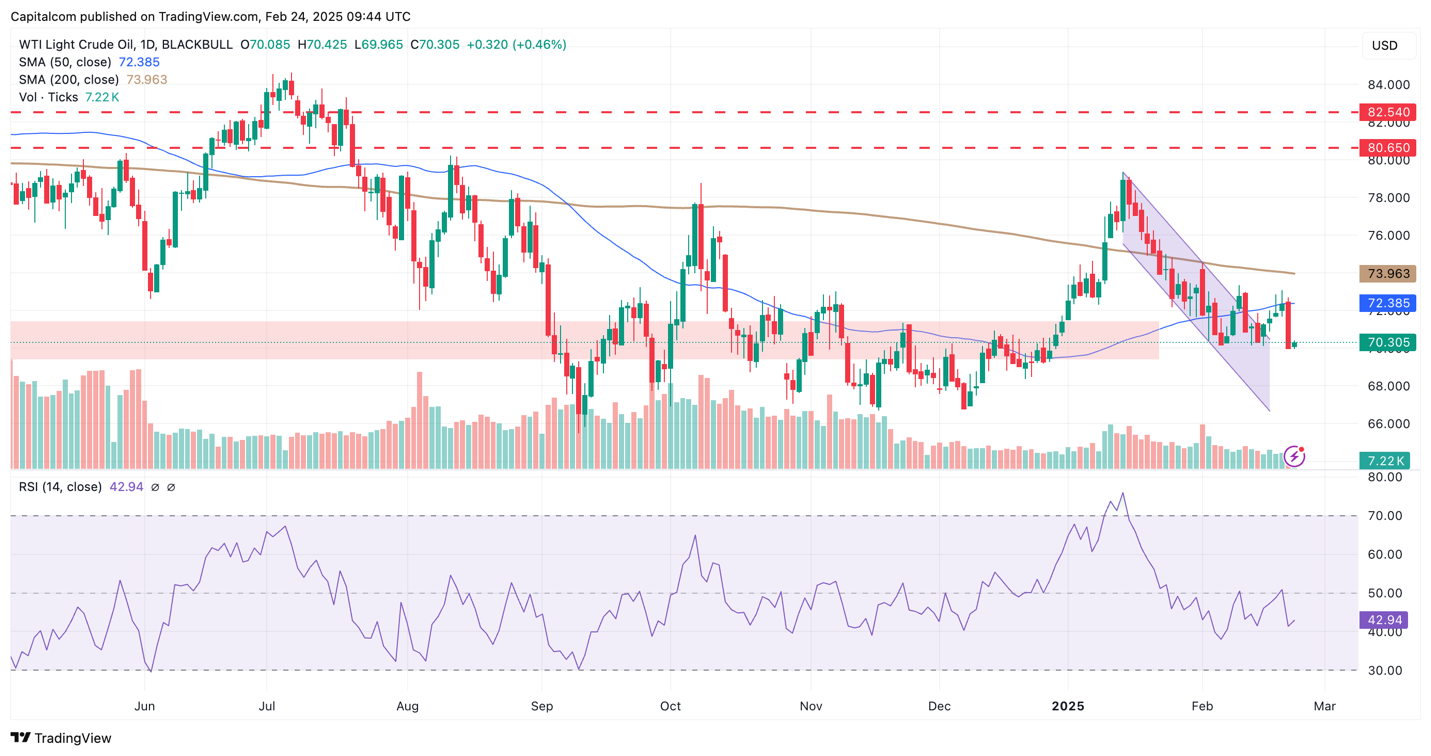WTI selloff halts at $70: will further bearishness prevail?
US crude prices attempt to rebound on Monday as talks about increased production in Kurdistan weigh on prices.
US crude oil (WTI) edged higher on Monday morning, rebounding from Friday’s sharp selloff that erased earlier gains. The recovery appears to be driven by news that President Trump is pressuring Iraq to resume oil exports from its Kurdistan oilfields—a move that could ease supply disruptions that have troubled global markets for nearly two years.
Friday’s downturn was not an isolated incident but part of a broader pattern of volatility. Over recent weeks, oil prices have been heavily influenced by the administration’s push for lower energy costs through increased production both domestically and abroad. Since the mid-January highs, the momentum has been skewed to the downside, with even brief rebounds being quickly capped and reversed. This pattern underscores the prevailing dominance of sellers, as buyer-driven gains are modest and short-lived.
US Crude (WTI) daily chart

Past performance is not a reliable indicator of future results.
Technical analysis further reinforces the bearish sentiment. The Relative Strength Index (RSI) remains trapped below the 50 level, signalling ongoing selling pressure. Currently, WTI is hovering just above the key $70 support mark—a level that has held since the start of the year. Should this support break, prices could potentially drop to around $68 per barrel, where additional support might emerge.
Adding to the bearish outlook is the prospect of increased tariff friction. Last Friday, President Trump signed a memorandum directing the Committee on Foreign Investment in the United States (CFIUS) to restrict Chinese investments in certain sectors. This development, along with heightened geopolitical, trade, and economic uncertainties, may further drag oil prices downward.